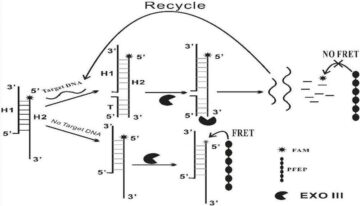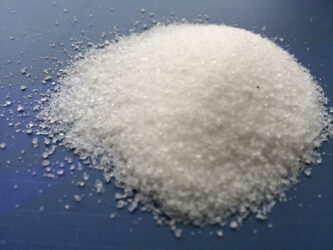Introduction to Cationic Polymers?

Cationic polymerization by cation initiation and polymerization reaction of the general term, cation activity is very high, very easy to occur in a variety of side reactions,
it is difficult to obtain a high molecular weight polymer; carbon cations are prone to and alkali binding, transfer, isomerization and other side reactions – constitute the characteristics of cationic polymerization; initiation process is very complex,
so far not completely determined; the use of cationic polymerization and large-scale industrialization of products only butyl rubber.
1.Cationic polymerization monomer
Alkene monomers with electron-pushing groups
Formation of cations
In principle, cationic polymerization can be carried out from two aspects.
1. push electron group makes the double bond electron cloud density increase, which is conducive to cationic active species attack.
2. After the formation of carbon cations, the presence of electron-pushing groups changes the scarcity of electron clouds on carbon,
reduces the energy of the system, and increases the stability of carbon cations.
Can polymerization into polymers
1. The proton has a strong affinity for the carbon-carbon double bond.
2. The growth reaction is faster than other side reactions, i.e. the resulting carbon cation has proper stability.
2. Cationic polymerization initiator
Cationic polymerization initiators are electrophilic reagents, including three types of protonic acids, Lewis acids and carbon cation salts.
Among all oxygenated inorganic acids, perchloric acid best meets the two conditions of strong acidity and weak acid-root affinity, and is the most frequently used inorganic acid initiator.
3. Cationic polymers
Cationic polyacrylamide (CPAM) is a linear polymer, which can form hydrogen bonds with many substances by affinity and adsorption because it has a variety of active groups.
It mainly flocculates negatively charged colloids and has the functions of turbidity removal, decolorization, adsorption and bonding, etc.
It is suitable for the treatment of wastewater with high organic colloid content in dyeing, papermaking, food, construction, metallurgy, mineral processing, coal dust, oil field, aquatic processing and fermentation, etc.
It is especially suitable for the dewatering treatment of municipal sewage, municipal sludge, paper sludge and other industrial sludge.
Technical index
English name: cationic polyacrylamides
Appearance: white granules
Solid content: ≥88%
Molecular weight: 8-12 million
Cation concentration: 10-70 %
Dissolution time: ≤ 30 minutes
Features
1. Good water solubility, can be completely dissolved in cold water.
2. Adding a small amount of cationic polyacrylamide products can be subjected to great flocculation effect. Generally only 0.01~10ppm (0.01~10g/m3) need to be added to give full effect.
3. Using cationic polyacrylamide products and inorganic flocculants (polymerized ferric sulfate, polymerized aluminum chloride, iron salt, etc.) at the same time can show a greater effect.
4. Cationic polymer applications
Introduction to the application of cationic polyacrylamide in wastewater treatment
1. Powdered cationic polyacrylamide is often used in organic wastewater:
it is usually used to allow flocculation and precipitation of sewage in which suspended particles are negatively charged.
According to the cationic acidic or alkaline media in the flocculation device, it is extremely effective to rely on the cationic presentation for rapid clarification of sewage.
In addition to powdered polyacrylamide, polymeric aluminum chloride and anionic polyacrylamide molding products are also being increasingly used in organic wastewater treatment.
2. Alcohol factory wastewater, brewery wastewater, MSG factory wastewater, sugar factory wastewater, meat product factory wastewater,
beverage factory wastewater, textile printing and dyeing factory and various wastewater plants with various organic solvents, inorganic and organic sulfides, hydrocarbons, chlorine, oil,
mercury and other environmentally harmful components can be flocculated with polyacrylamide and then discharged.

It can also be used as mud treatment agent in oil field development process, selective water plugging agent, water injection thickener,
softener in textile printing and dyeing process, static electricity prevention agent and general sterilization and disinfection agent, etc.
3. Used in water purification, water/oil system emulsion breaking, oily wastewater treatment, wastewater re-resource and sludge dewatering, etc.;
polyacrylamide can effectively reduce the friction resistance of fluid, adding a small amount of polyacrylamide in water can reduce the resistance by 50-80%.
5. Cationic polymerization chemicals
Polymeric Aluminum Chloride
Aluminum ions in polymeric aluminum chloride are cations, and polymeric aluminum chloride in China is mainly used in industrial wastewater and tap water purification, etc.
The consumption of these two fields accounts for about 70% of the total consumption. The proportion of industrial sewage purification is more than 40%;
the proportion of tap water purification and domestic sewage treatment is about 30%; industrial recycled water and river reservoir purification accounts for 20%;
other accounts for 10%. With the further improvement of national requirements for environmental protection governance, the use in industrial wastewater treatment will continue to increase significantly.
The main water purification agents used in our market are polymeric aluminum chloride, aluminum sulfate, ferric polymeric aluminum chloride and so on.
6. Cationic polymer applications
1. Urban water supply and drainage purification: river water, reservoir water, groundwater.
2.Industrial water supply purification.
3.Urban wastewater treatment.
4.Recovery of useful substances in industrial wastewater and waste residue, promotion of coal powder settlement in coal washing wastewater,recovery of starch in starch manufacturing industry.
5. Various industrial wastewater treatment: dyeing wastewater, leather wastewater, fluorine wastewater, heavy metal wastewater,
oil wastewater, paper wastewater, coal washing wastewater, mining wastewater, brewing wastewater, metallurgical wastewater, meat processing wastewater, sewage treatment.
6. Paper sizing.
7. Sugar refining.
8. Casting and molding.
9. Cloth wrinkle prevention.
10. Catalyst carrier.
11. Pharmaceutical refining.
12. Cement quick setting.
13.Cosmetic raw materials.

 By Coco Ho
By Coco Ho






